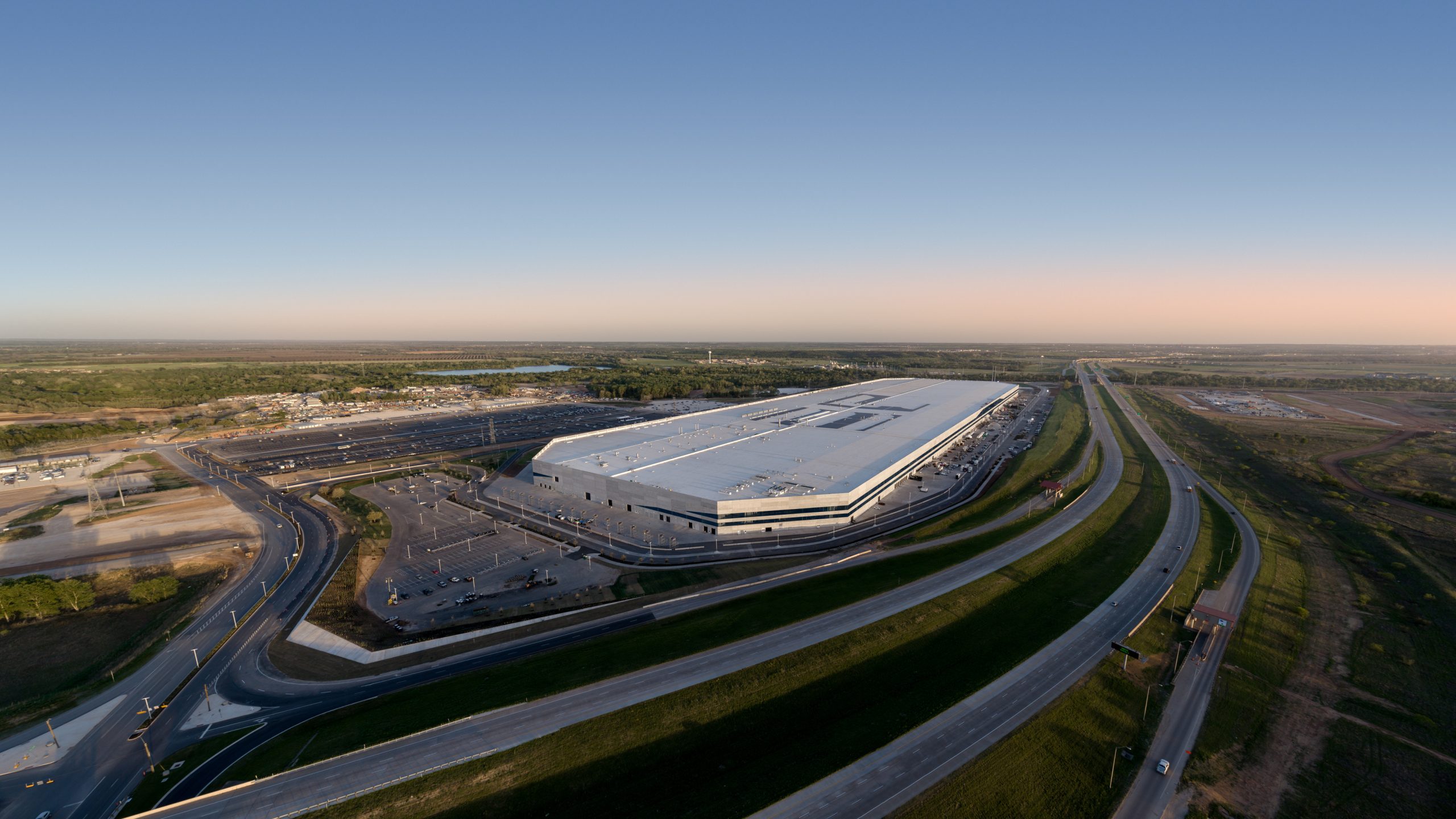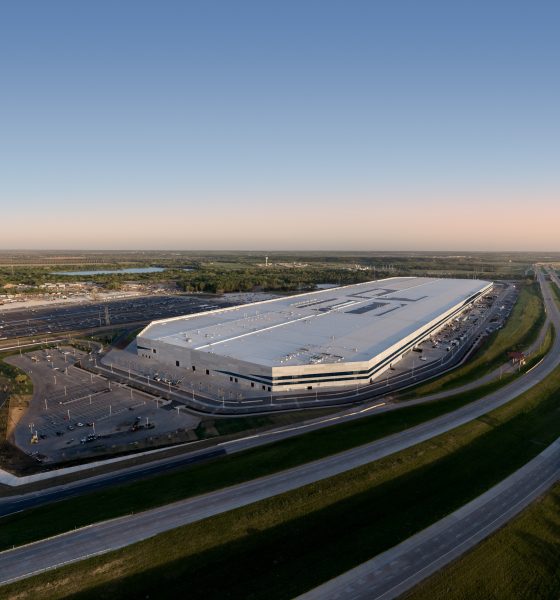

News
Tesla’s proposed TX lithium refinery takes step forward as school district ratifies tax abatements
Tesla’s proposed lithium refinery in Texas seems to have taken another step forward after a South Texas school district approved an incentives agreement for the project.
During a special meeting, the Robstown Independent School District approved a taxable value limitation for Tesla’s proposed lithium refinery under Chapter 313 of the Texas Tax Code. The vote was unanimous, hinting at the board’s support for the American electric vehicle maker.
Tesla has noted that it may invest about $365 million into the proposed lithium refinery. Thanks to the incentives agreement, the land value for taxes that would be paid to the Robstown Independent School District would be limited to $20 million for the plant’s first 10 years in operation, starting in 2025. According to an Austin Business Journal analysis, this could save Tesla an estimated $16.2 million on property taxes over that period.
Previous reports have indicated that Tesla is looking to build a plant near Robstown, Texas, that would process, refine, and manufacture battery materials for the company’s supply chain. The plant’s final product will be battery-grade lithium hydroxide, which will then be used in electric vehicle batteries and big battery systems at Tesla’s manufacturing sites.
Tesla is also looking to secure property tax incentives under Chapter 312 of the Texas Tax Code with Nueces County. Chapter 312 allows a property owner to pay less in taxes for a certain amount of time if they make improvements to their property. A public hearing on December 5 was held to discuss possible Chapter 312 tax abatements for Tesla’s proposed lithium refinery.
At the public meeting, Tesla representatives such as Senior Global Director Rohan Patel emphasized that the proposed lithium refining facility in Nueces is a step toward the company’s goal of accelerating the advent of sustainable energy. In their presentation, they said that the facility would not produce lithium batteries in a conventional manner in order to limit waste production and pollution. The representatives also said that Tesla’s lithium battery production process would use less water.
“For this facility, the needs are fairly small, compared to an industrial facility, many industrial facilities that exist here, so what we’ve been told from the water authority, now I don’t have the facts and figures of what exactly is needed, but we’re happy to get that to you,” Patel said.
Patel and Tesla Senior Manager Karen Steakley shared a 10-minute presentation about the proposed facility during the public meeting. Tesla’s proposal had polarizing reactions from the event’s attendees. Some, such as 43-year-old chemical engineer and former Robstown school board member Pablo Avila told the Corpus Christi Caller Times that he was excited about Tesla’s planned lithium refinery. Some attendees, however, complained that Tesla’s presentation did not include specific information about the facility’s potential environmental issues. Others also questioned if Tesla, which is led by Elon Musk, one of the world’s richest people, still needed tax abatements.
I’d like to hear from you. Contact me at maria@teslarati.com or via Twitter @Writer_01001101.

Elon Musk
Tesla CEO Elon Musk drops massive bomb about Cybercab
“And there is so much to this car that is not obvious on the surface,” Musk said.

Tesla CEO Elon Musk dropped a massive bomb about the Cybercab, which is the company’s fully autonomous ride-hailing vehicle that will enter production later this year.
The Cybercab was unveiled back in October 2024 at the company’s “We, Robot” event in Los Angeles, and is among the major catalysts for the company’s growth in the coming years. It is expected to push Tesla into a major growth phase, especially as the automaker is transitioning into more of an AI and Robotics company than anything else.
The Cybercab will enable completely autonomous ride-hailing for Tesla, and although its other vehicles will also be capable of this technology, the Cybercab is slightly different. It will have no steering wheel or pedals, and will allow two occupants to travel from Point A to Point B with zero responsibilities within the car.
Tesla shares epic 2025 recap video, confirms start of Cybercab production
Details on the Cybercab are pretty face value at this point: we know Tesla is enabling 1-2 passengers to ride in it at a time, and this strategy was based on statistics that show most ride-hailing trips have no more than two occupants. It will also have in-vehicle entertainment options accessible from the center touchscreen.
It will also have wireless charging capabilities, which were displayed at “We, Robot,” and there could be more features that will be highly beneficial to riders, offering a full-fledged autonomous experience.
Musk dropped a big hint that there is much more to the Cybercab than what we know, as a post on X said that “there is so much to this car that is not obvious on the surface.”
And there is so much to this car that is not obvious on the surface
— Elon Musk (@elonmusk) January 2, 2026
As the Cybercab is expected to enter production later this year, Tesla is surely going to include a handful of things they have not yet revealed to the public.
Musk seems to be indicating that some of the features will make it even more groundbreaking, and the idea is to enable a truly autonomous experience from start to finish for riders. Everything from climate control to emergency systems, and more, should be included with the car.
It seems more likely than not that Tesla will make the Cybercab its smartest vehicle so far, as if its current lineup is not already extremely intelligent, user-friendly, and intuitive.
Investor's Corner
Tesla Q4 delivery numbers are better than they initially look: analyst
The Deepwater Asset Management Managing Partner shared his thoughts in a post on his website.

Longtime Tesla analyst and Deepwater Asset Management Managing Partner Gene Munster has shared his insights on Tesla’s Q4 2025 deliveries. As per the analyst, Tesla’s numbers are actually better than they first appear.
Munster shared his thoughts in a post on his website.
Normalized December Deliveries
Munster noted that Tesla delivered 418k vehicles in the fourth quarter of 2025, slightly below Street expectations of 420k but above the whisper number of 415k. Tesla’s reported 16% year-over-year decline, compared to +7% in September, is largely distorted by the timing of the tax credit expiration, which pulled forward demand.
“Taking a step back, we believe September deliveries pulled forward approximately 55k units that would have otherwise occurred in December or March. For simplicity, we assume the entire pull-forward impacted the December quarter. Under this assumption, September growth would have been down ~5% absent the 55k pull-forward, a Deepwater estimate tied to the credit’s expiration.
“For December deliveries to have declined ~5% year over year would imply total deliveries of roughly 470k. Subtracting the 55k units pulled into September results in an implied December delivery figure of approximately 415k. The reported 418k suggests that, when normalizing for the tax credit timing, quarter-over-quarter growth has been consistently down ~5%. Importantly, this ~5% decline represents an improvement from the ~13% declines seen in both the March and June 2025 quarters.“
Tesla’s United States market share
Munster also estimated that Q4 as a whole might very well show a notable improvement in Tesla’s market share in the United States.
“Over the past couple of years, based on data from Cox Automotive, Tesla has been losing U.S. EV market share, declining to just under 50%. Based on data for October and November, Cox estimates that total U.S. EV sales were down approximately 35%, compared to Tesla’s just reported down 16% for the full quarter. For the first two months of the quarter, Cox reported Tesla market share of roughly a 65% share, up from under 50% in the September quarter.
“While this data excludes December, the quarter as a whole is likely to show a material improvement in Tesla’s U.S. EV market share.“
Elon Musk
Tesla analyst breaks down delivery report: ‘A step in the right direction’
“This will be viewed as better than feared deliveries and a step in the right direction for the Tesla story heading into 2026,” Ives wrote.

Tesla analyst Dan Ives of Wedbush released a new note on Friday morning just after the company released production and delivery figures for Q4 and the full year of 2025, stating that the numbers, while slightly underwhelming, are “better than feared” and as “a step in the right direction.”
Tesla reported production of 434,358 and deliveries of 418,227 for the fourth quarter, while 1,654,667 vehicles were produced and 1,636,129 cars were delivered for the full year.
Tesla releases Q4 and FY 2025 vehicle delivery and production report
Interestingly, the company posted its own consensus figures that were compiled from various firms on its website a few days ago, where expectations were set at 1,640,752 cars for the year. Tesla fell about 4,000 units short of that. One of the areas where Tesla excelled was energy deployments, which totaled 46.7 GWh for the year.
🚨 Wedbush’s Dan Ives has released a new note on Tesla $TSLA:
“Tesla announced its FY4Q25 delivery numbers this morning coming in at 418.2k vehicles slightly below the company’s consensus delivery estimate of 422.9k but much better than the whisper numbers of ~410k as the…
— TESLARATI (@Teslarati) January 2, 2026
In terms of vehicle deliveries, Ives writes that Tesla certainly has some things to work through if it wants to return to growth in that aspect, especially with the loss of the $7,500 tax credit in the U.S. and “continuous headwinds” for the company in Europe.
However, Ives also believes that, given the delivery numbers, which were on par with expectations, Tesla is positioned well for a strong 2026, especially with its AI focus, Robotaxi and Cybercab development, and energy:
“This will be viewed as better than feared deliveries and a step in the right direction for the Tesla story heading into 2026. We look forward to hearing more at the company’s 4Q25 call on January 28th. AI Valuation – The Focus Throughout 2026. We believe Tesla could reach a $2 trillion market cap over the coming year and, in a bull case scenario, $3 trillion by the end of 2026…as full-scale volume production begins with the autonomous and robotics roadmap…The company has started to test the all-important Cybercab in Austin over the past few weeks, which is an incremental step towards launching in 2026 with important volume production of Cybercabs starting in April/May, which remains the golden goose in unlocking TSLA’s AI valuation.”
It’s no secret that for the past several years, Tesla’s vehicle delivery numbers have been the main focus of investors and analysts have looked at them as an indicator of company health to a certain extent. The problem with that narrative in 2025 and 2026 is that Tesla is now focusing more on the deployment of Full Self-Driving, its Optimus project, AI development, and Cybercab.
While vehicle deliveries still hold importance, it is more crucial to note that Tesla’s overall environment as a business relies on much more than just how many cars are purchased. That metric, to a certain extent, is fading in importance in the grand scheme of things, but it will never totally disappear.
Ives and Wedbush maintained their $600 price target and an ‘Outperform’ rating on the stock.








